On March 29th 2023, Hartaj Singh (Oppenheimer Senior Research Biotechnology Analyst) moderated a virtual Fireside Chat panel with Xavier Barril, Ph.D. (Gain Therapeutics’ CTO), Brandon Allgood, Ph.D., (former Chief Artificial Intelligence Officer of Valo Health), and Jason Paragas, Ph.D., (Founder and Venture Partner at Social Impact Capital Fund.) The four discussed the evolution in computational drug discovery and the impact ML has and will have have on biopharma and development of novel treatments for diseases with unmet medical needs. They will also discuss a direct example of identification of novel target by computational biology platform and development of small molecule soon to enter the clinic.
Over the last decade there has been a major boom in the development and application of computational methods and artificial intelligence. Driven by advancements in hardware, software, and data availability coupled with democratization of tools and technologies allowing for easier access to tools, has enabled the application of computational methods/AI on difficult problems. In the case of drug development, these tools have revolutionized the field by enabling:
- Identification of “undruggable targets”
- Dramatic reduction in drug development time
- Significant reduction in drug development cost
The ultimate goal of the confluence of these technologies is bringing more effective treatments to patients – especially patients suffering diseases with unmet medical needs.
While these tools have undoubtedly pushed the boundaries of what was once thought to be impossible and have been responsible for significant advances in the field (such as AlphaFold’s structure predictions of the human proteome), they are not perfect. Unfortunately, there is no silver bullet and human intervention remains a vital component of the process as there are several inherent limitations to using such computational approaches. These limitations, strengths, and forward looking outlooks are discussed extensively during the panel entitled: “Computational Biology in Drug Discovery with Gain Therapeutics (GANX) CTO & Two Experts.
To watch a webcast of the event: Click Here
To read a transcript of the event: Click Here
To learn more about the panel participants: Click Here
Q&A
What computational methodologies are used by Gain?
- Xavier Barril: “Some of the methods were developed nearly a decade ago when I established the computational discovery platform at the University of Barcelon. Back in the day, you’d have to spend a long time studying just one molecule and wait weeks or months to get a single calculation done. With AI and computational drug discovery, you can do that in a single click and get results overnight…we now have a tangible example – a molecule discovered by our platform technology entering the clinic within weeks to address a difficult to treat diseases – GBA1 Parkinsons Disease and others.
- Brandon Allgood: “We are now asking, How is this field different from other fields? The answer is that our accessibility to data, and the amount of data, and the cleanliness of data that is available… all of these have vastly improved over the past 5-10 years.”
What Gain is doing with computational drug discovery and why is it unique?
- Xavier Barril: “Gain is not trying to grab onto the low-hanging fruit. Instead, Gain is going for a new class of drugs beyond static drugs. This is difficult because there is no existing data, so the team has to employ active learning methods through machine learning models. As a pioneer in this field, Gain is doing a lot with generative models for 3D to predict things that might seem simple, but are really not. The tools we have allow us to identify molecules that bind to our static binding sites in a way that makes proteins function differently, rather than just breaking them down.
We take a 3D structure of the protein and use molecular simulations to identify where the protein would like to interact with organic molecules. This becomes an engineering problem as much as it is a discovery problem.” In terms of finding molecules that really complement the protein, we are seeing a very high success rate. The great thing in all of this is that there isn’t even a need to evaluate thousands of compounds to find the active molecules; just a few hundred will suffice.
Gain’s value is in starting something that others hadn’t thought of yet. Additionally, finding the right molecule, optimizing it, making sure that it has all the properties, and checking for the right biological response is key.”
We can now identify allosteric binding sites on molecules never previously described in a matter of weeks – favorably comparable to the years it used to take.
What do you envision the next layer of bricks would be in this building process for Gain? What would be the next logical step?
- Jason Paragas: “Gain established one of the cornerstones for what is next in the way that they’re looking at a protein with an allosteric inhibitor through simulation. This paved the way to start asking questions related to computational approaches and hardware advances. These questions might be, Do we start looking at protein complexes? Do we start looking at signaling?”
Can you use AI generated protein structures like those from the Alpha Fold games in drug discovery platforms?
- Xavier Barril: “All structures come with some limitations. They can be experimental in structure like in x-ray crystallography or they can come from one cryo-EM. Alternatively, they may come from homogenous modeling. The key is to understand the methods used to generate those structures and analyze the structures critically, regardless of where they’re coming from. That is what Gain is doing.”
Why has computational methodology been more useful with small molecules?
- Brandon Allgood: “There are two reasons:
- The molecules are small so they’re easier to get to.
- As an industry, we have been producing small molecule drugs for much longer, so that means there is a lot of data available. We’ve consequently developed more methods for generating that data at scale.
The reason computational methodology has been effective with small molecules doesn’t have to do with the algorithms themselves; it’s just that there’s more computational tractability and data. Over time, we’ll likely see small molecule design expand to large molecules, RNA, cell-based therapies, Crispr therapies— they’re all going to include machine learning and really explode. My thinking is that we have the hardware/software data to reinforce new methods for generating data to enable better algorithms. I think “we will see a lot of other therapeutic areas catch up in terms of the amount of therapies we have, [and] the therapies that are going to clinical trials as a result of machine learning because they’ll be able to run them on larger hardware.”
- Xavier Barril: “There is a third reason as to why computational methods have been particularly useful with small molecules: when designing antibodies, there are engineering methods that operate like evolution. The goal of active learning methods with computers is to mimic what the molecules are doing.”
What is next, aside from small molecules? Is it the protein-protein interaction? What other areas are amenable to the computational drug discovery approach?
- Jason Paragas: “We’re going to see an explosion in antibodies and peptides in the spirit of supercomputing. Just look at Livermore, which designed an antibody a day and a half after the Chinese published the SARS sequence by using computational methods. They did this because they had access to a supercomputer. I think we’ll see the same thing with peptides; the ability to design a peptide sits somewhere between a large and small molecule. I predict that we are going to start to see computation following the kind of frontier of therapeutics even better than generation 2 and 3 of biotherapy.
One of the hardest things the industry is seeing is figuring out how to develop these “beautiful drugs” in a way that is accessible. This is because right now they cost hundreds of millions of dollars to get across the finish line, and that takes us into a different business.
Still, we can be optimistic about the future. There will come a time when a pharmaceutical company will be designed from the ground up as a computational company. This opens up the discussion to new questions, including, “What is a pharmaceutical company? What is a biotech company? What is an AI Drug Discovery company?” The next 5 years will be pivotal to answering these questions.”
Biotech success rates haven’t changed much in the last 50 years and the hope is that with computational methods, we’ll see the probability of success increase as a result of more precision; Is that realistic?
- Jason Paragas: “Yes, it is realistic. With about 250 AI drug discovery companies, there is a lot of opportunity to develop predictions and do forecasting in closed-loop experiments. Some people may be disappointed when they hear a 25% success rate, but in biology that is truly incredible.”
- Brandon Allgood: “Statistics don’t always paint the whole picture on how successful we really are. We are producing molecules that perform like we want them to in vitro. We’re getting better all the time. In the past, the problem has been the lack of complexity in biology and the lack of data. But now we’re at a time where EMR data sets and multiatomic analysis of patients are enabling us to connect phenotypes with biological test functions from the beginning, when we’re doing target selection. That is ultimately what is going to change our success rates in the clinic.”
Is what we need to do is not just get better at producing new molecules or better molecules, but also on making sure that we de-risk the biology from the beginning?
- Xavier Barril: “We have been developing these drugs for the last 30 years. With all the data, with all the knowledge, we go for completely different mechanisms of action. Now there’s excitement about proximity and pharmacology like targeted protein, degradation, etc. What we have done is in an effort to fix the right protein that doesn’t work. We have a non-standard mechanism of action. We’re operating in a static site with no data. We need to generate our own data and then scale it to billions and trillions of molecules. The hard part of drug discovery is learning how to design things that were previously impossible. If you look at our pipeline, we have 7 different programs and proteins. In each case, we have been able to find molecules that bind to the proteins. We work with our own targets; we optimize the molecules in house using proprietary tools.”
What are the 1-2 things you would request for the public markets to think about when vetting companies using computational methodologies, whether for tools or drug discovery? What do you want them to think about to better understand their business and give them a better valuation?
- Brandon Allgood: “Take some time to understand the potential of the platform and the depth of the pipeline, and how those things are synergistic. This will expand on the value. This goes back to the question Jason Paragas asked earlier: How do you build a company around a computational platform? This is still a huge challenge because it requires that we ask, “How much do you value the platform? How much do you value the pipeline?”
What advice would you give to potential investors when thinking about companies coming through the pipeline from private companies? Where could there be a disconnect between private and public approaches for computational/computer-aided companies?
- Jason Paragas: “I look at the platform and how extensible it is. Can the platform grow and scale?”
What would you like investors to think about Gain and to know? What do you think is the greatest misunderstanding about Gain? Why should investors be looking at Gain?
- Xavier Barril: “We can do things that no one else can. It’s not just about doing it faster, it’s about actually doing something other people haven’t been able to do. We offer a connection between the mechanism of action and what these molecules do with the disease… that’s pretty straightforward.
- This is the reverse of what people have been doing before abd that translates into a better prediction of what’s going to be the outcome in the clinic. Additionally, we offer a more direct relationship between the drug and what the molecules are doing. Scientists and drug developers are able to understand that the platform can actually be useful for a broad range of diseases, even in the realm of oncology.”
Our portfolio of product demonstrates that we can design specific molecules that very quickly which can do the
following:
- Increase gain of function
- Destabilize proteins
- Protein degradation
What is the relevance of Chat GPT and its involvement in drug discovery through computational methods?
- Jason Paragas: “Chat GPT is a “technical milestone.” With Chat GPT, what Google did was build; they put one brick in the foundation of computational drug design. Protein structure is absolutely an amazing achievement. But it’s only one brick. The second brick is the gene regulatory pathway- how these proteins line up and how they transmit a signal. We can’t quite do that with a computer yet but we’re on the way. Sure, we see technological advances as amazing achievements (which they are), but they’re only scratching the surface of where we need to be in the next 5-10 years.”
Has Chat GPT raised the bar in terms of exposure for drug discovery?
- Brandon Allgood: “No one knows how it’s going to affect things for drug discovery. Every CEO on the planet has explored the question of how Chat GPT will be used by their engineering team. Everyone wants to know how it’s going to change things. It will be used in business in general, but it may not necessarily raise the level of awareness for computational drug design.
What I’m really excited about is the closed loop. In the biopharma field, there’s a basic tenet of machine learning that the training set is pulled from. The goal is to focus on speeding up the loop connection (between laboratory and machine learning) with simulation. Our goal is to stay in silico for longer before going into the atoms.
Panel Participants
Brandon Allgood, Ph.D.
Brandon Allgood currently the Founder; Board Member of The Alliance For Artificial Intelligence In Healthcare (AAIH)(2019-Present). He was also the Chief AI Officer at Valo Health Inc. (09/2019-12/2022). Brandon was also the Co-Founder;CTO (02/2013-09/2019) and Director of Computational Science (03/2007-02/2013) at Numerate Inc. Brandon was also the Senior Software Engineer at Pharmix Corporation (07/2006-03/2007). He is a entrepreneur focused on applying machine learning (ML) and large scale computational methods to improve human health. Brandon’s former companies, Valo Health, Numerate, and Pharmix are and were groundbreaking companies at the forefront of applying modern ML and computational methods to drug discovery and development in diverse subfields, including chemistry, biology, clinical trials and real-world health data. Brandon was formerly the Chief AI Officer at Valo Health where he provided technology vision through three VC rounds of financing and managed the engineering and data science teams that were developing and applying Valo’s AI-based platform, the Opal Computational Platform. Prior to Valo Health, Brandon was the co-founder and Chief Technology Officer of Numerate, a leader in ML-driven computational small molecule drug design. At Numerate, he lead the engineering and data science teams in developing Numerate’s Data Driven Drug Design (D4) Platform, which was used successfully on over 30+ drug design programs at Numerate and in partnership with small biotechnology and large pharmaceutical companies. Brandon received a B.S. in Physics from the University of Washington, Seattle, and a Ph.D. in Theoretical Cosmology from the University of California, Santa Cruz. Brandon has authored scientific publications in astrophysics, solid-state physics, and computational biology and chemistry and has 18 years of experience in large-scale cloud and distributed computing, AI, and mathematical modeling.
Jason Paragas, Ph.D.
Dr. Jason Paragas PhD, is the current Venture Partner at Social Impact Capital a research-driven venture capital firm backing the companies that move the world forward. He is also the current CEO of Newco an Alternative Finance company specializing in MCA Bridge-Capital, Tatio Inc. Previously, he was the President of SaponiQx. He has also held the position as Vice President Strategic Initiatives and Growth Exploration at Agenus and Vice President External Innovation at Valo.
Xavier Barril, Ph.D., Chief Technology Officer, Gain Therapeutics, Inc. (GANX)
Dr. Xavier Barril has served as Chief Technology Officer since January 2018. Dr. Barril has over 18 years of experience in computational chemistry and drug discovery. Since 2005, Dr. Barril has been with the University of Barcelona as ICREA professor. Prior to joining Gain, Dr. Barril served as co-founder & scientific advisor to Minoryx Therapeutics. He has also developed his career at Vernalis as a senior investigator. Among other discoveries, Dr. Barril is co-inventor of the Hsp90 inhibitors that Vernalis licensed to Novartis and which underwent clinical trials. He is the inventor of the innovative platform technology that Gain Therapeutics is exploiting to identify new structurally targeted allosteric regulators. Dr. Barril has co-authored more than 80 scientific publications and 10 patents. Dr. Barril received a Ph.D. in Biochemistry from the University of Barcelona


